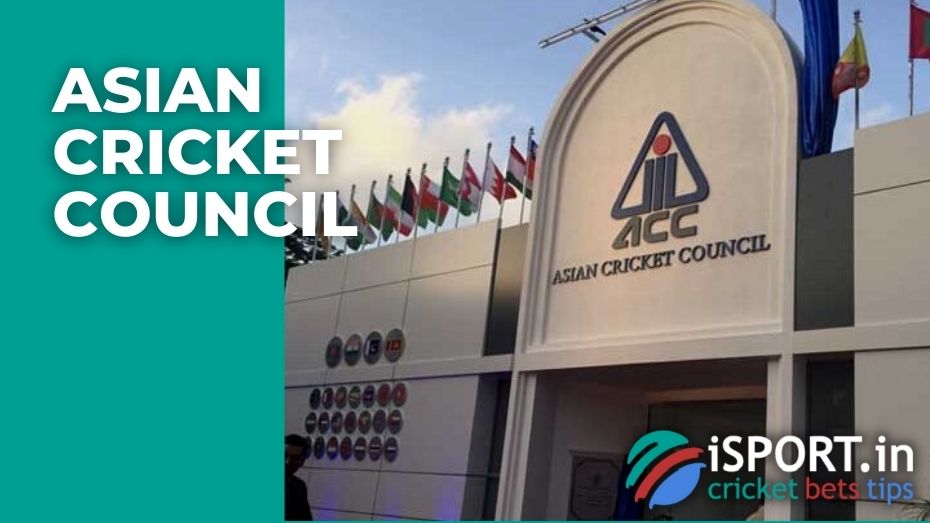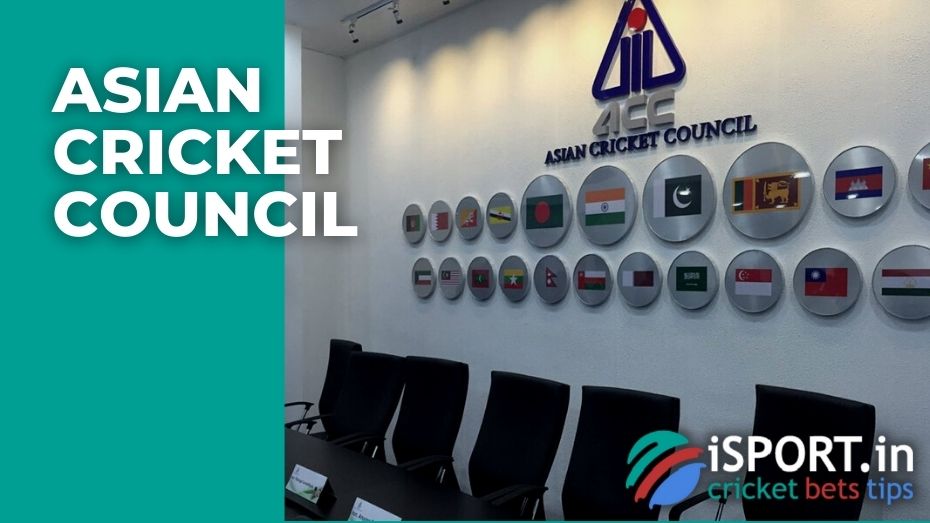Asian Cricket Council

The main organization that conducts cricket matches and develops this sport in the Asian region is the Asian Cricket Council. The council includes 24 national federations. Like other regional associations, the Asian Cricket Council is subordinate to the International Cricket Council. The current president of the organization is Jay Shah, who took over in January 2021. He also holds the position of Secretary of the Board of Control for Cricket in India.
Asian Cricket Council: history of creation
The main cricket organization on the Asian continent was founded in 1983 as the Asian Cricket Conference. The first congress of the association was held with the participation of six national federations: India, Pakistan, Bangladesh, Singapore, Malaysia, Sri Lanka. In 1995, the continental association was given its current name. Until 2003, the Asian Cricket Council did not have a permanent headquarters. The seat changed every two years depending on who was acting as president and secretary of the organization. The posts were distributed among the representatives of the six countries mentioned above, which became the founders of the Asian Cricket Council.
In 2016, Colombo (Sri Lanka) became the base of the Asian Cricket Council. Previously, the headquarters of the organization was located in Malaysia.
Asian Cricket Council: members
The Asian Cricket Council includes 24 national federations. They fall into two categories:
- Full members. Five federations.
- Associate members. 16 federations have the status of associate members. Three federations are not officially recognized but have some associated member rights.
Among the full-fledged members of the Asian Cricket Council, we will single out four federations that stood at the origins of the council. First of all, it is worth noting India, which was the first in Asia to become a member of the International Cricket Council. Indians have been playing international matches since 1926. The Pakistani national team appeared on the international scene in 1952. Sri Lanka has been officially competing in overseas competitions since 1965. Bangladesh joined the International Cricket Council in 1977. Afghanistan is a unique federation for the Asian region. Representatives of this country only in 2001 applied for membership in the International Cricket Council. Two years later, Afghanistan was admitted to the regional council and immediately received the status of a major participant.

Associate members of the Asian Cricket Council are divided into two categories:
- Associate Members with ODI and T20I status. The national teams of Nepal, Oman and the UAE can compete in the ODI and T20I competition formats on the same grounds as the full members of the Asian Cricket Council. The UAE Federation has the greatest traditions. She joined the Continental Council in 1984 and became a member of the International Cricket Council in 1990. At this time, Nepal gained recognition in Asia, but the team began to perform only six years later at the world level. Oman joined two organizations in 2000.
- Associate Members with T20I status. These are 13 national federations. Only five of them made it onto the Asian Cricket Council in the 20th century: Hong Kong, Malaysia, Maldives, Singapore and Thailand. Bahrain, Saudi Arabia, Qatar, Bhutan, China, Iran, Myanmar and Kuwait have gained status in the 21st century.
In 2012, three teams applied for membership in the Asian Cricket Council at once: Cambodia, Chinese Taipei and Tajikistan. Their membership has not yet been confirmed. Three national federations announced their withdrawal from the Asian Council after the formation of East Asia-Pacific became known: Fiji, Japan and Papua New Guinea. The teams announced their decision in 1996. Another loss to the Asian Cricket Council is Brunei. This national federation also decided to leave the Asian Council in 1996. She left the International Cricket Council in 2015.
Asian Cricket Council: tournaments
Throughout its history, the Asian Cricket Council has hosted more than ten continental tournaments. Let’s highlight the most relevant at the moment:
- Asia Cup. This is the main tournament for the Asian national teams, which takes place every two years. The first draw took place in 1984. In 2022, the tournament will be hosted by Sri Lanka. The most titled Asia Cup team is India, which has seven victories. Sri Lanka won five times, Pakistan won twice.
- Women’s Asia Cup. The main tournament for the Asian women’s cricket teams. The first draw took place in 2004. National teams gathered for the Women’s Asia Cup in even years. The exception was 2020 when the tournament was postponed to 2021 due to the coronavirus pandemic. In the first five championships, the Indian national team was the winner. In 2018, the Bangladesh team won the tournament for the first time.
Some tournaments in Asia were short-lived. So, there was an attempt to launch the start of the local Champions League in 2014, but later this idea was abandoned. The ACC Trophy was a permanent tournament for the national teams of the Asian region until 2014. Then he was replaced by the Premier League, which consists of three divisions.

Asian Cricket Council: interesting facts
The Asian Cricket Council has 16 members. The main requirement of the council is that the leaders must be from different countries. Thus, the maximum number of compatriots from India is three. Two from Pakistan, Sri Lanka, Bangladesh and Afghanistan. All five national federations are full members of the Asian Cricket Council. Oman also has two representatives on the council, which is an associate member with ODI and T20I status. There is also one member from Thailand and the Maldives.
